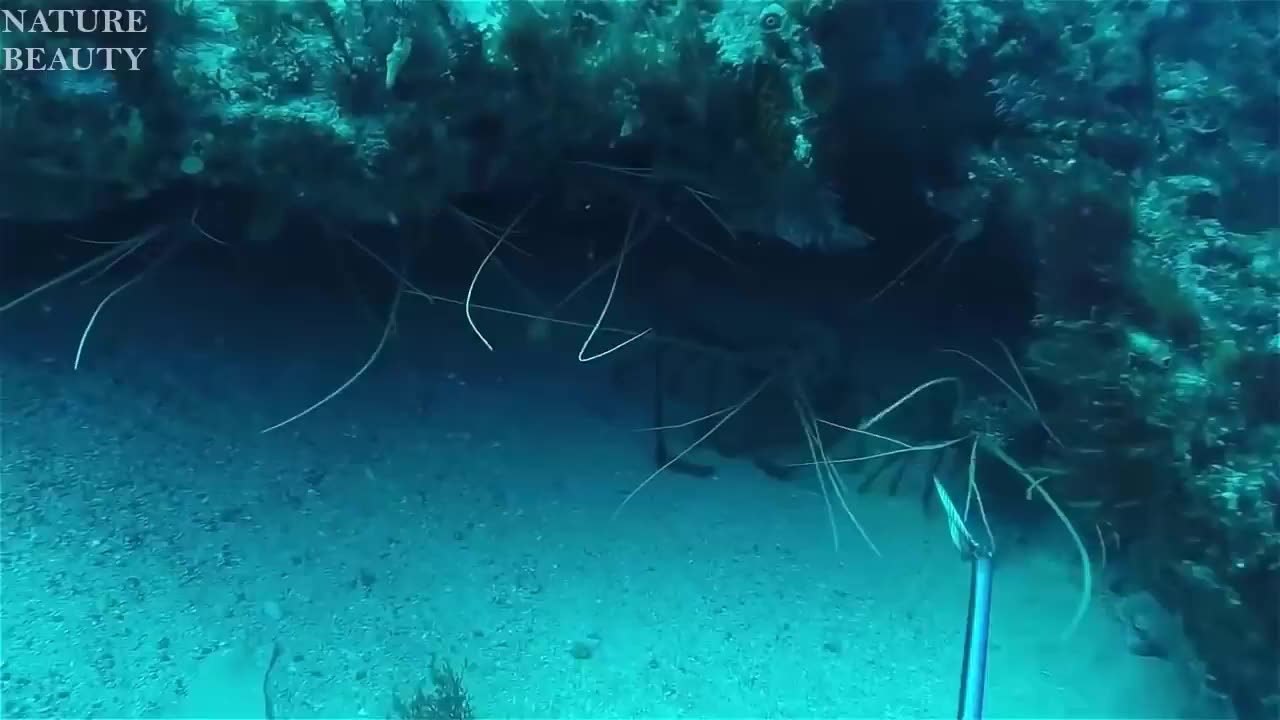Premium Only Content

Oceanlife and Nature of Ocean #09
Ocean life encompasses the diverse array of organisms that inhabit Earth's vast oceans, which cover approximately 70% of the planet's surface. The ocean is a rich and vibrant ecosystem, teeming with life and offering an array of captivating features. Here's a description of ocean life:
Marine Diversity: The ocean is home to an extraordinary range of species, from tiny plankton to colossal whales. It supports a remarkable biodiversity, with an estimated one million known species and possibly millions more yet to be discovered. From colorful fish and majestic sea turtles to delicate coral reefs and microscopic phytoplankton, the diversity of ocean life is awe-inspiring.
Habitats: The ocean comprises various habitats, each with its unique characteristics and inhabitants. Coastal zones are bustling with life, with rocky shores providing homes for barnacles, tide pools housing crabs and anemones, and mangrove forests serving as nurseries for many marine species. Deep-sea environments host bizarre and elusive creatures adapted to the extreme pressures and darkness of the abyss.
Coral Reefs: Coral reefs are among the most diverse and breathtaking ecosystems in the ocean. These underwater cities of vibrant colors are built by tiny coral polyps. They provide shelter for an abundance of marine life, including tropical fish, rays, sharks, and sea turtles. Coral reefs are not only visually stunning but also serve as critical habitats and protect coastlines from erosion.
Marine Mammals: The oceans are home to a variety of fascinating marine mammals. Whales, such as the majestic humpback and the immense blue whale, roam the depths, breaching and communicating through haunting songs. Dolphins exhibit remarkable intelligence and playfulness, while seals and sea lions inhabit coastal regions, often congregating in large colonies.
Pelagic Species: The pelagic zone refers to the vast open waters of the ocean. Here, large schools of fish, such as tuna and mackerel, migrate across vast distances, pursued by predatory species like sharks and marlins. Flying fish glide above the surface, while oceanic birds, including albatrosses and shearwaters, traverse the skies in search of food.
Intertidal Life: The intertidal zone is the area that lies between the high and low tide marks. This dynamic environment is characterized by the constant ebb and flow of the tides. Organisms in this zone must adapt to extreme variations in temperature, salinity, and exposure to air. Barnacles, crabs, anemones, and seashells are among the diverse species that inhabit this ever-changing habitat.
Deep-Sea Wonders: The deep-sea, which encompasses the vast and largely unexplored regions below 200 meters (656 feet), harbors extraordinary life forms. Bioluminescent creatures light up the darkness, while bizarre deep-sea fish like anglerfish and gulper eels exhibit extraordinary adaptations to survive in this harsh environment. Hydrothermal vents, spewing hot mineral-rich fluids, create oases of life, hosting unique organisms that thrive in extreme temperatures.
Threats and Conservation: Ocean life faces numerous threats, including overfishing, pollution, habitat destruction, and climate change. These factors endanger fragile ecosystems, disrupt food chains, and impact the survival of many species. Conservation efforts, such as the establishment of marine protected areas, sustainable fishing practices, and reducing plastic waste, are essential to safeguard the health and resilience of ocean life.
The ocean is a captivating realm, filled with an incredible diversity of life. Exploring its depths reveals a world of wonders and showcases the interconnectedness of marine ecosystems. Protecting and preserving ocean life is crucial for maintaining the health of our planet and ensuring the continued existence of these remarkable and vital ecosystems
-
 28:35
28:35
marcushouse
20 hours ago $0.63 earnedSpaceX’s Wild New Plan to Launch Starship Fast… and NASA’s Booster Test Ended With a BOOM!
9.63K3 -
 LIVE
LIVE
Lofi Girl
2 years agolofi hip hop radio 📚 - beats to relax/study to
1,247 watching -
 8:01
8:01
MattMorseTV
1 day ago $9.38 earnedNYC Democrat is in HOT WATER.
49.3K104 -
 7:24
7:24
Warren Smith - Secret Scholar Society
1 day ago1 Guy Causes Entire Mob of Protesters to Implode & Get Arrested
77.9K43 -
 31:24
31:24
The Why Files
3 days agoSynchronicities | The Science Behind Your Meaningful Coincidences (STRIPPED)
51K44 -
 2:07:34
2:07:34
FreshandFit
8 hours agoWhy You Are Unhappy Dating!
60.2K20 -
 1:21:38
1:21:38
Badlands Media
1 day agoDevolution Power Hour Ep. 367
114K32 -
 2:28:09
2:28:09
Tundra Tactical
7 hours ago $8.31 earned🔥 NFA Hypocrisy EXPOSED: the Senate Just Screwed Gun Owners (Again) | Tundra Nation Live Roast 🔥
42.6K3 -
 3:44:43
3:44:43
DLDAfterDark
7 hours ago $5.69 earnedDLD Live! Red Dawn Readiness! HPA & Short Act Updates - T Rex Arms - Guns Gear & God
36.9K2 -
 LIVE
LIVE
GamersErr0r
7 hours ago $1.61 earnedMarvel Rivals Booty Bandit | Ft. SnoopLion
191 watching